Abstract
The relationship between verbal behavior and stimulus equivalence was examined using three sets of children differing in chronological age and verbal ability: (1) non-hearing impaired three and four year olds who had verbal skills generally consistent with their chronological ages; (2) partially hearing (severe to profoundly deaf) children who were rated with verbal ages of above 2 years; and (3) partially hearing children (also severely to profoundly deaf) who were rated with verbal ages of below 2 years. All children were taught a series of four conditional discriminations using unfamiliar stimuli. The children were then tested to determine whether classes of equivalent stimuli had formed. Although all the children were able to learn the conditional discriminations equally well and all the verbally-able children (normal and partially hearing) formed equivalence classes, only one of the verbally-impaired children reliably demonstrated stimulus equivalence formation. These results are consistent with the suggestion that stimulus equivalence and human verbal behavior are closely related.
Full text
PDF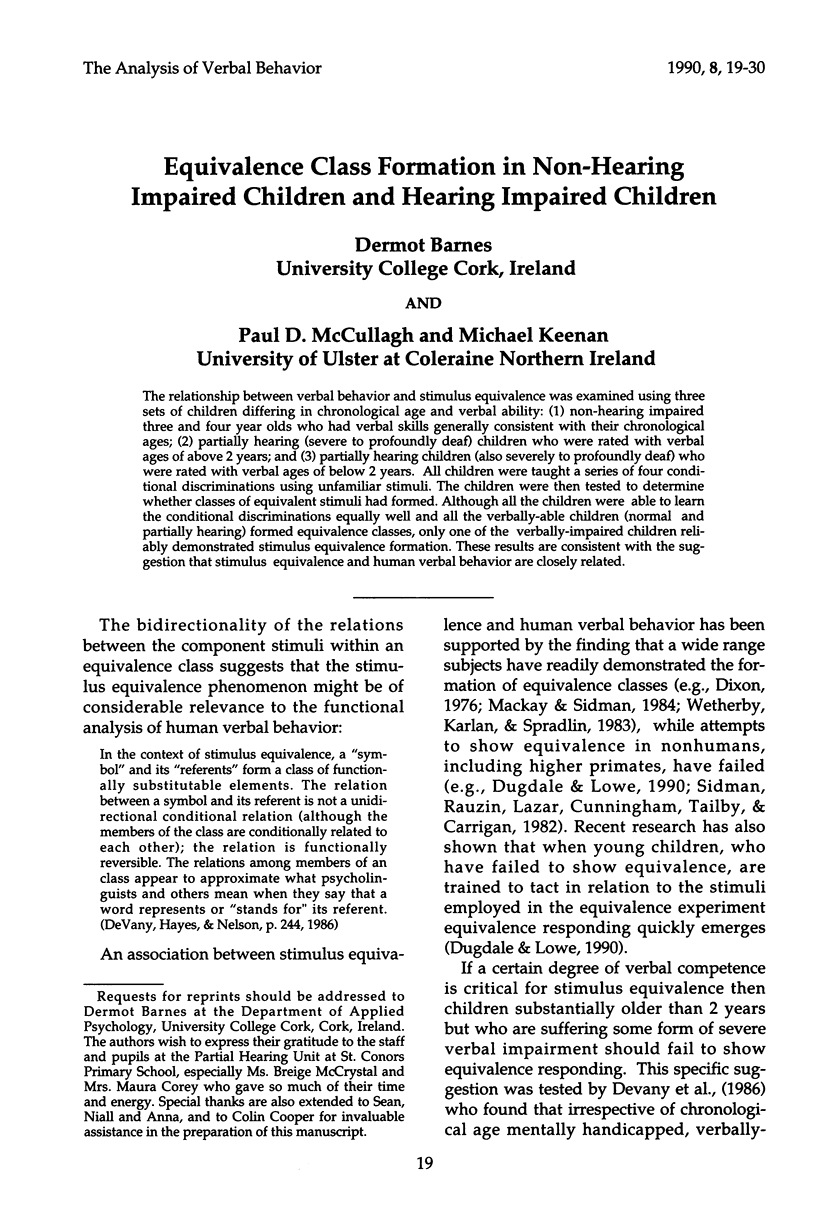
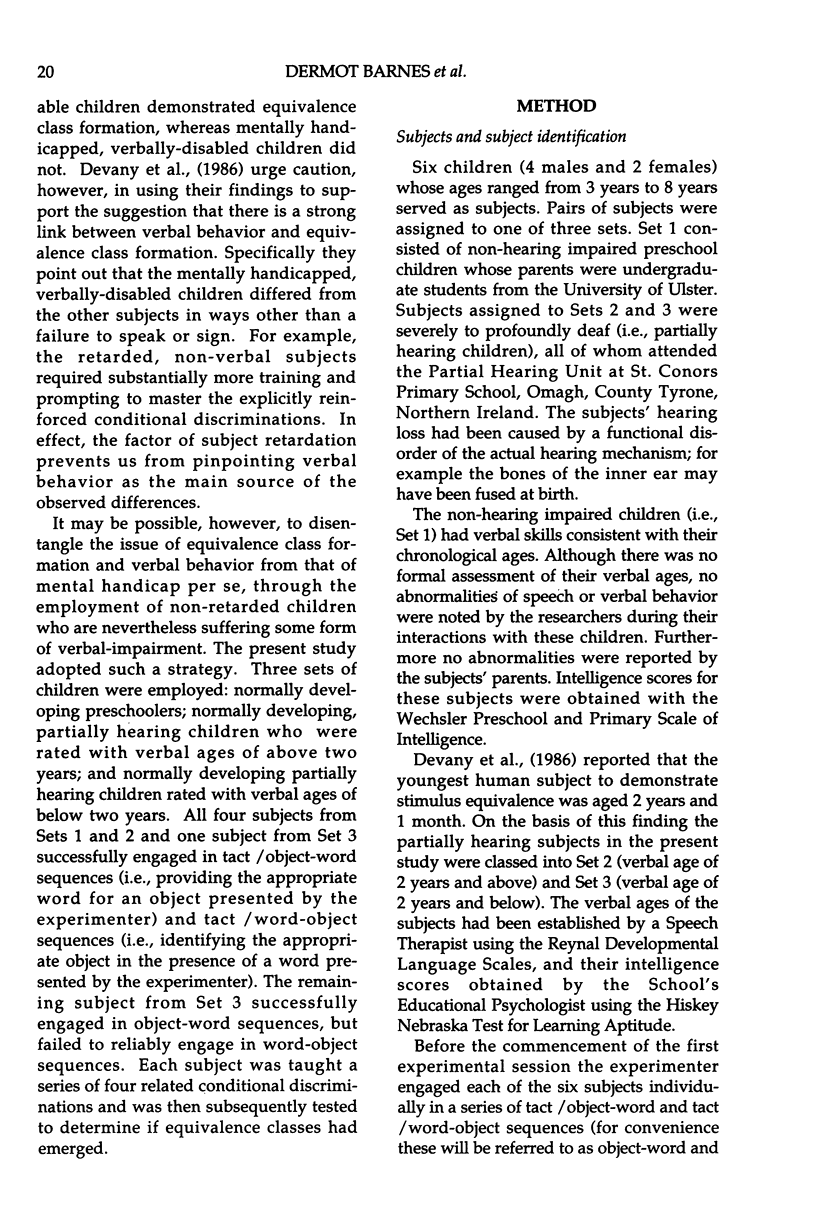
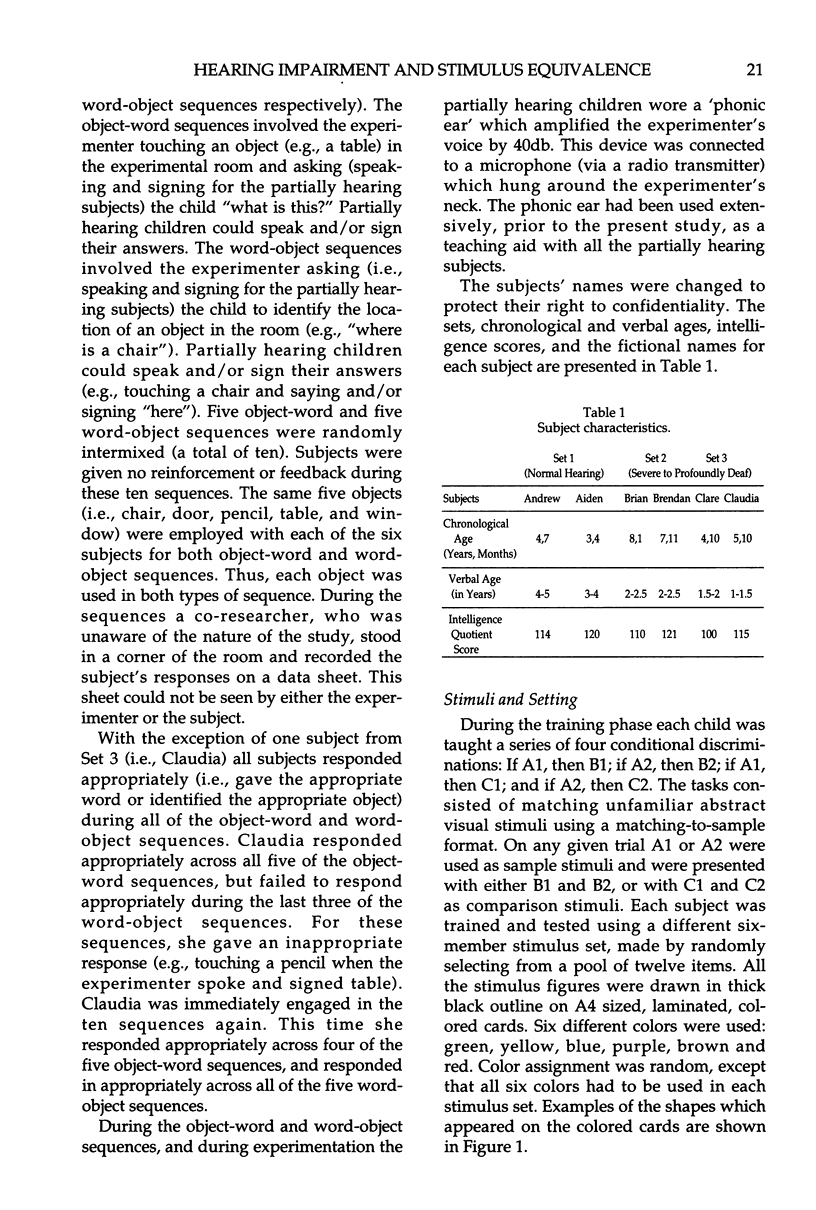
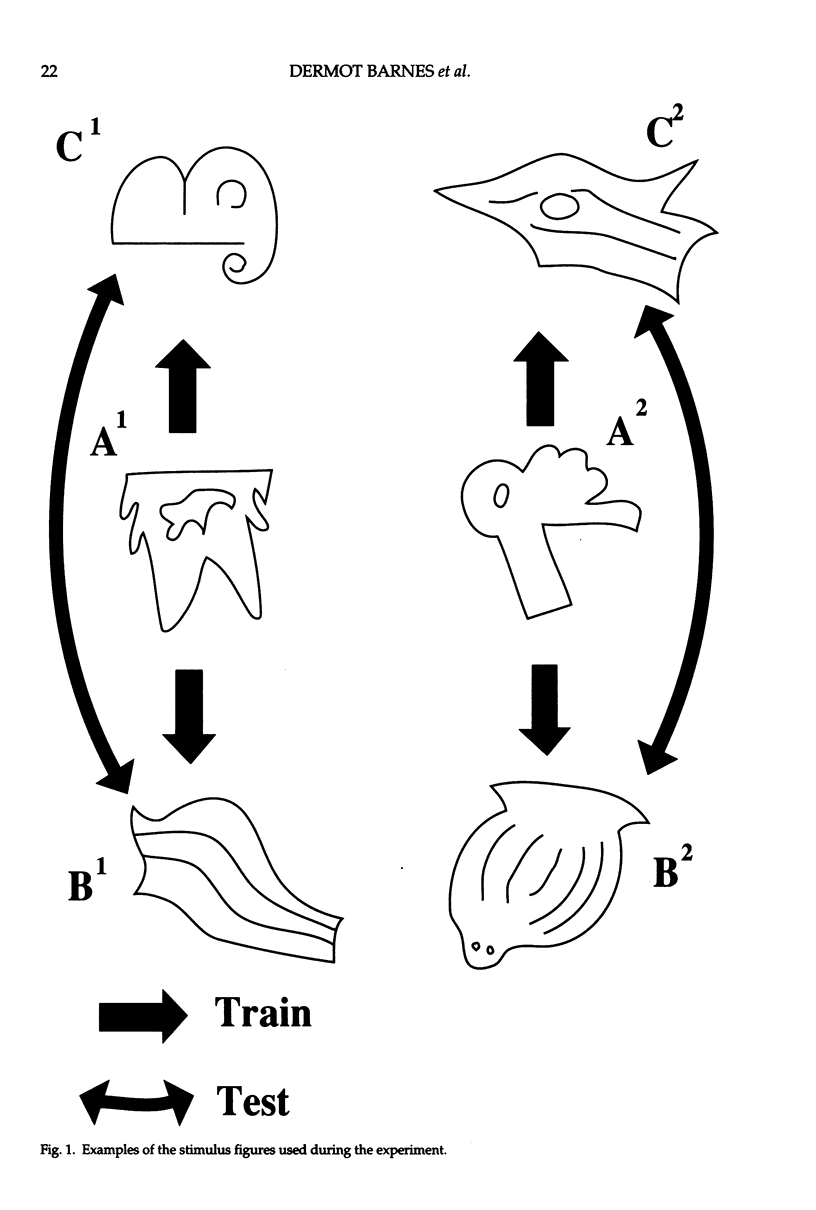
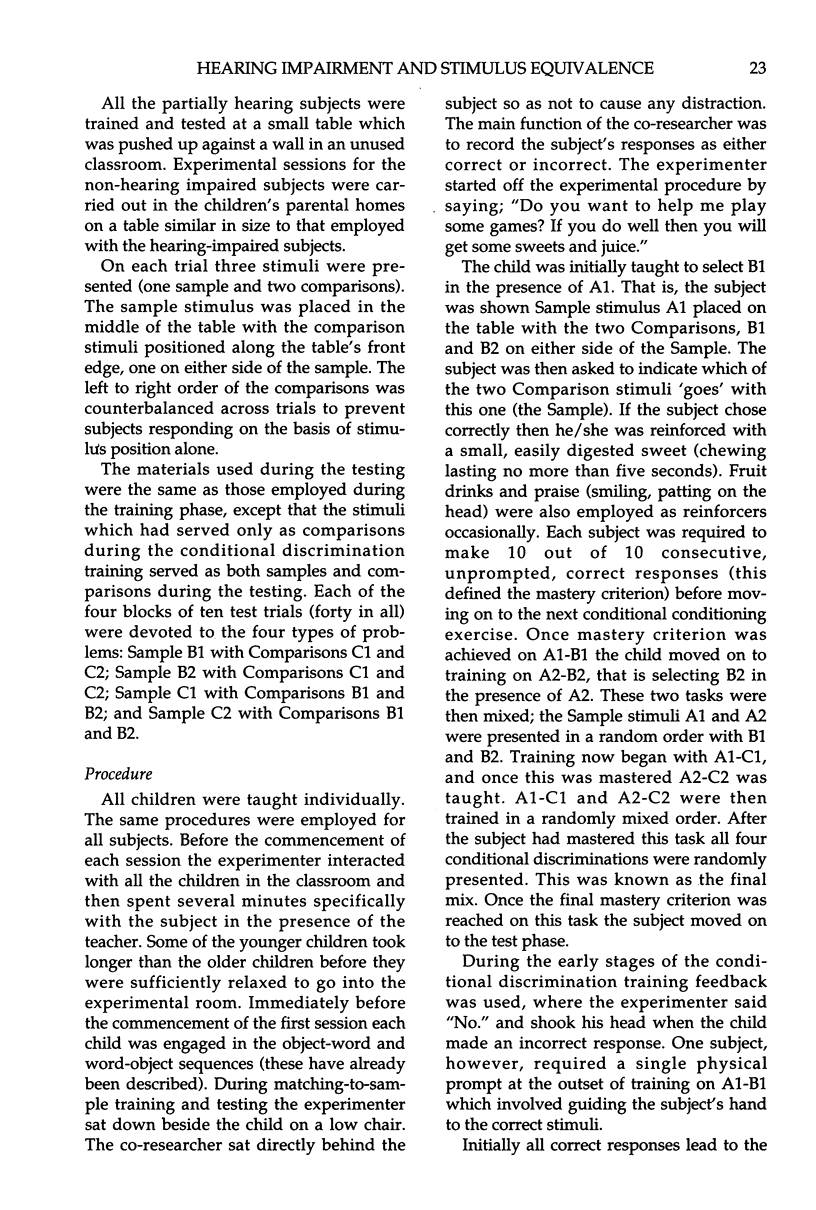
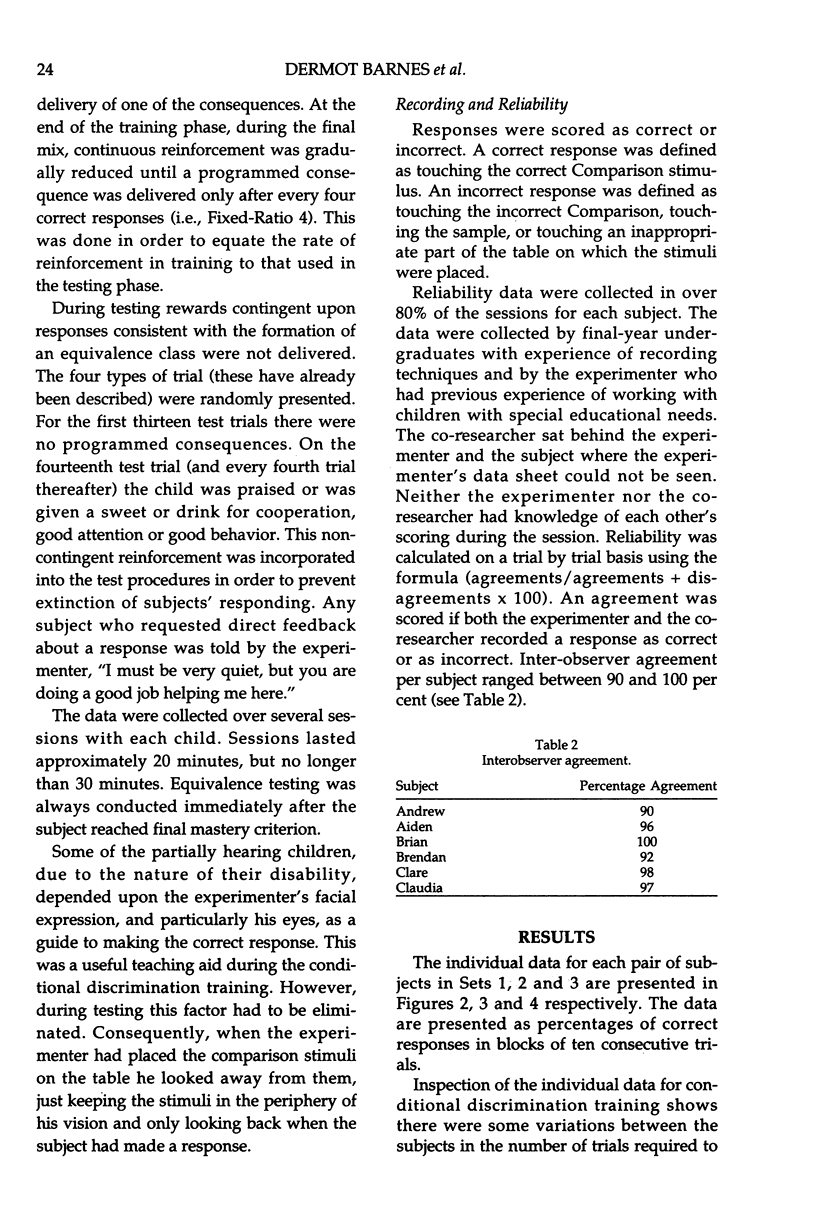
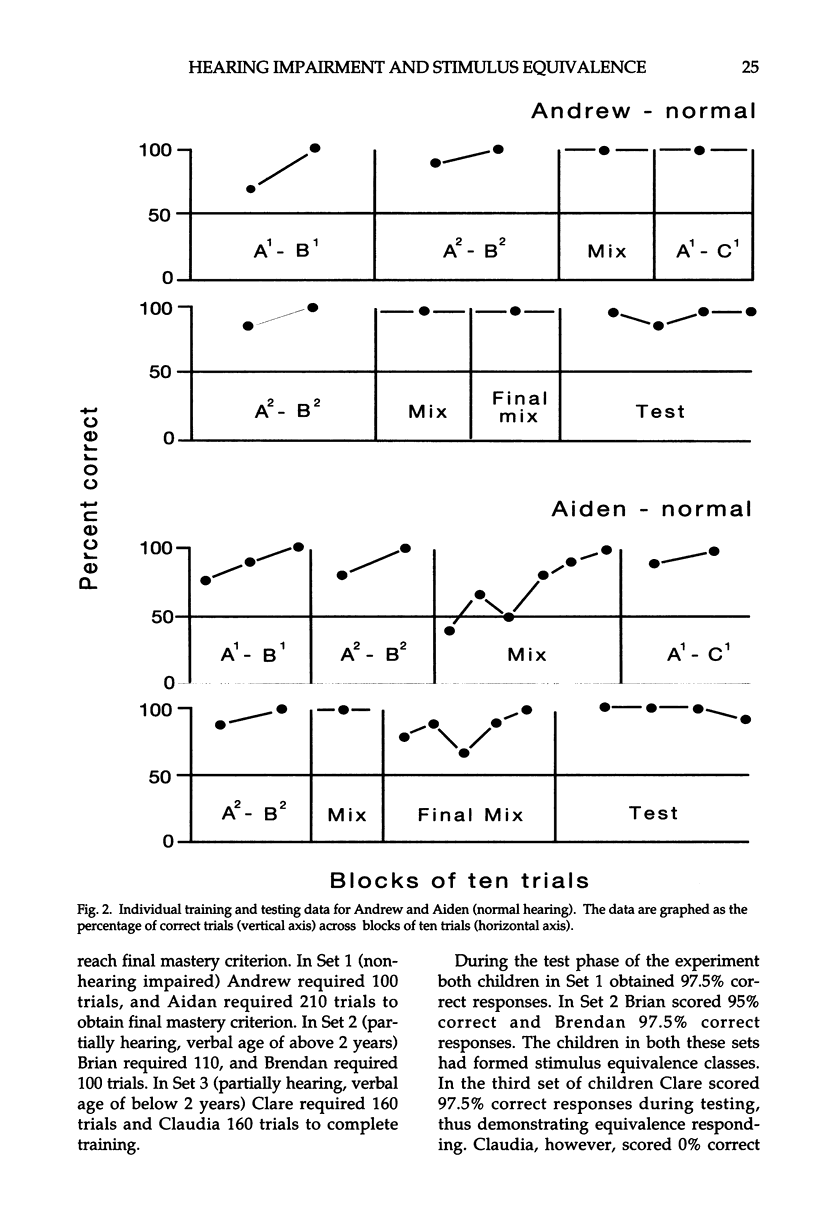
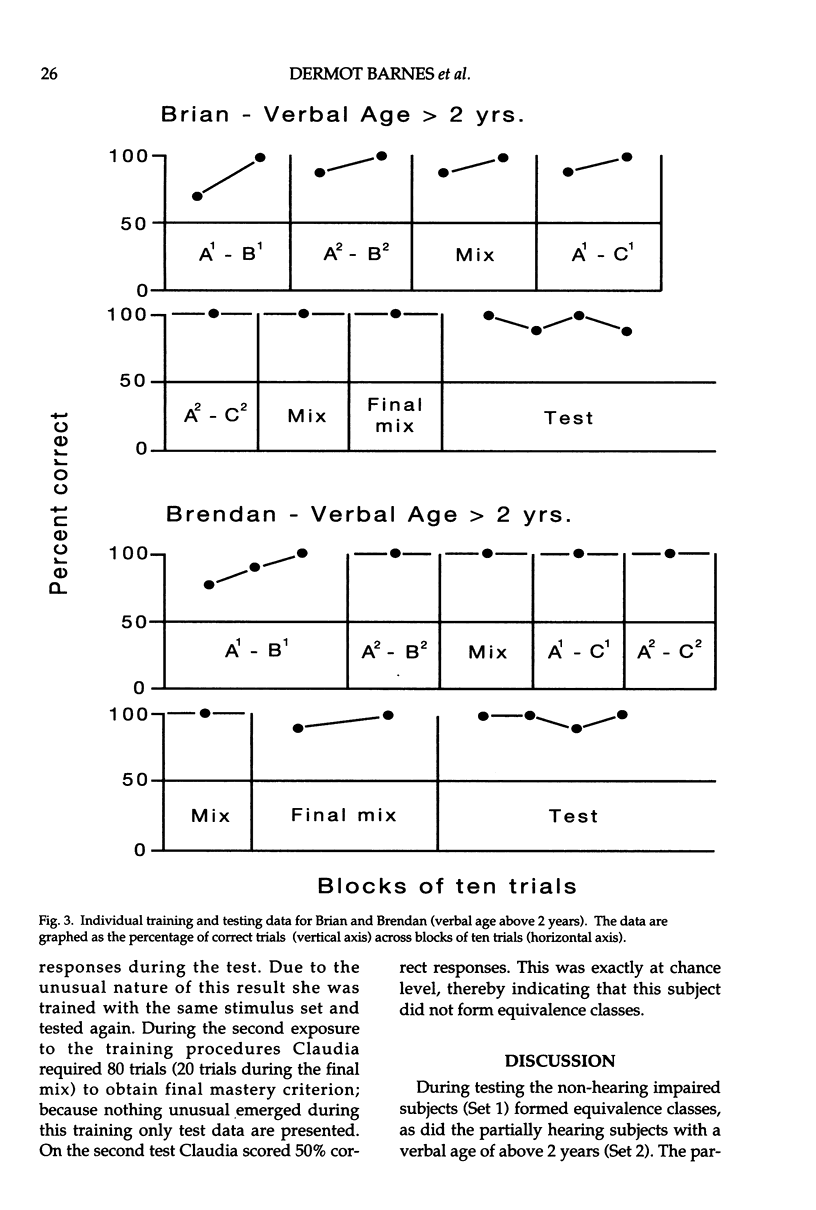
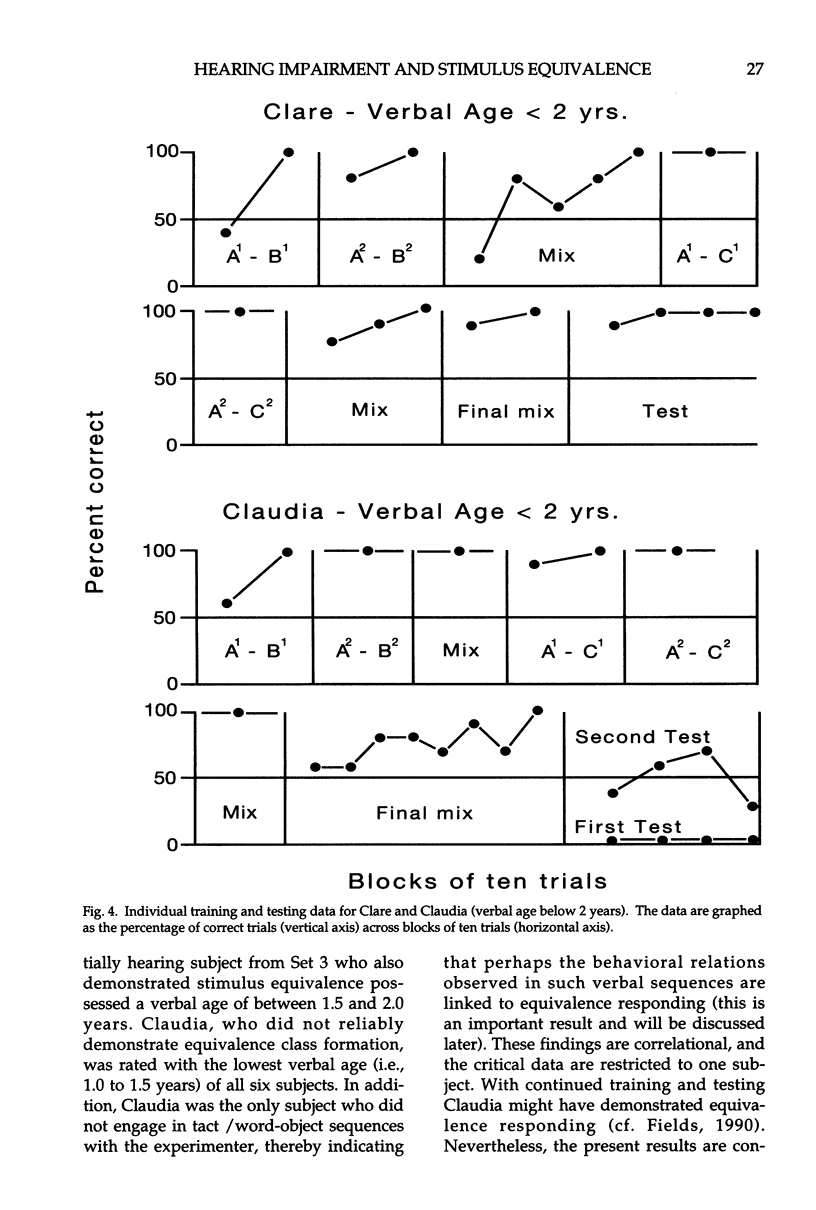
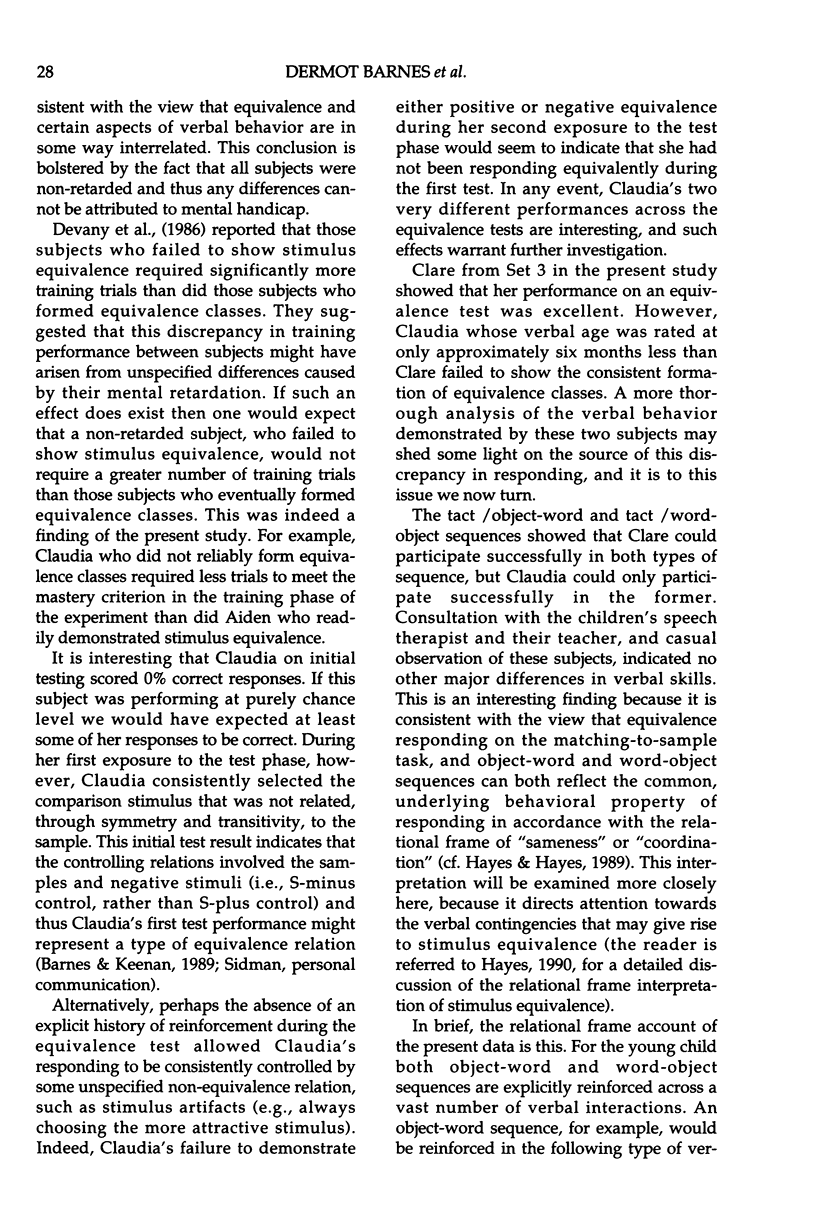
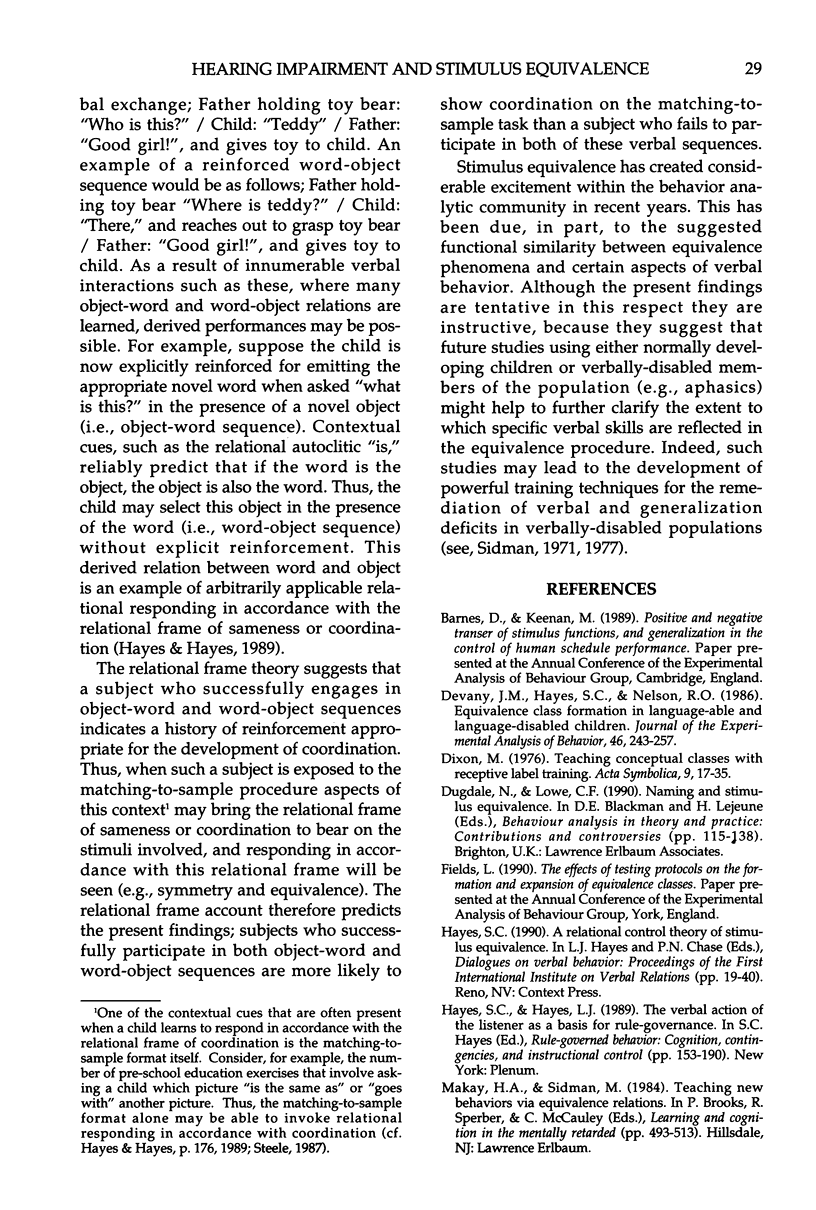
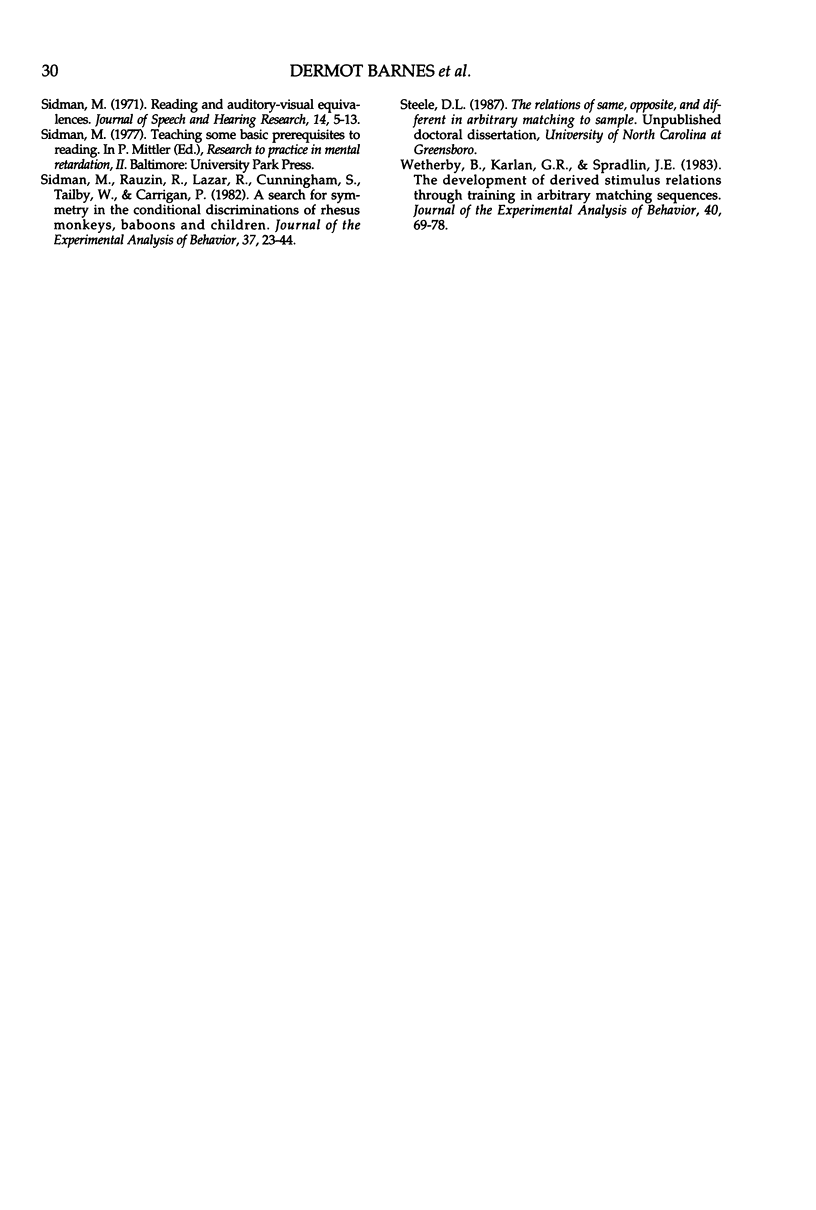
Selected References
These references are in PubMed. This may not be the complete list of references from this article.
- Devany J. M., Hayes S. C., Nelson R. O. Equivalence class formation in language-able and language-disabled children. J Exp Anal Behav. 1986 Nov;46(3):243–257. doi: 10.1901/jeab.1986.46-243. [DOI] [PMC free article] [PubMed] [Google Scholar]
- Sidman M., Rauzin R., Lazar R., Cunningham S., Tailby W., Carrigan P. A search for symmetry in the conditional discriminations of rhesus monkeys, baboons, and children. J Exp Anal Behav. 1982 Jan;37(1):23–44. doi: 10.1901/jeab.1982.37-23. [DOI] [PMC free article] [PubMed] [Google Scholar]
- Sidman M. Reading and auditory-visual equivalences. J Speech Hear Res. 1971 Mar;14(1):5–13. doi: 10.1044/jshr.1401.05. [DOI] [PubMed] [Google Scholar]
- Wetherby B., Karlan G. R., Spradlin J. E. The development of derived stimulus relations through training in arbitrary-matching sequences. J Exp Anal Behav. 1983 Jul;40(1):69–78. doi: 10.1901/jeab.1983.40-69. [DOI] [PMC free article] [PubMed] [Google Scholar]


